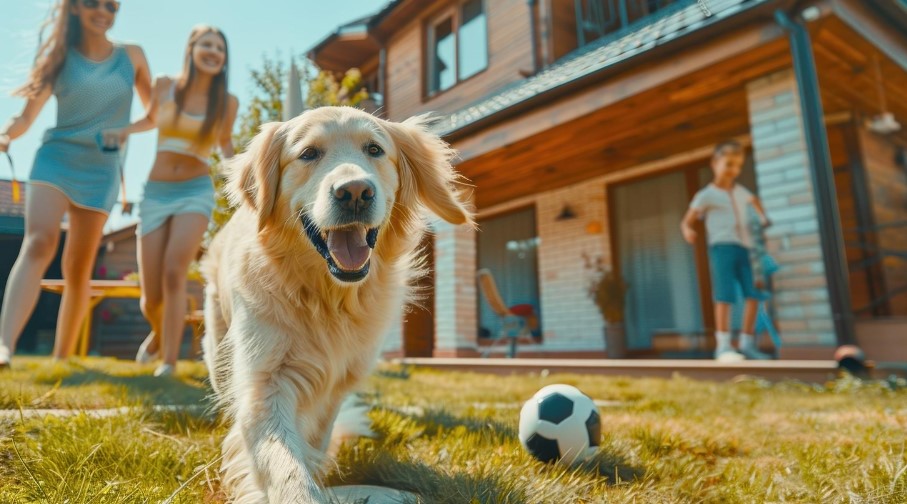
Dogs make wonderful family pets and companions when properly cared for. But pet owners need to take steps to ensure their homes are safe, secure environments for their furry friends. From potential hazards and toxins to diet and exercise needs, creating a dog-friendly home requires some planning and precautions. With a few simple adjustments, you can dog-proof your living spaces to keep your pup out of harm’s way.
Pet-Proofing Your Home
Just like baby proofing for children, dog owners should pet-proof their living spaces to prevent accidents, injuries or dogs getting into trouble. To that end, here are a few tips:
- Remove Hazards: Clear floors and access areas of anything a dog could choke on, like kids’ toys, socks, ribbons, dental floss, or small objects. Securely store and keep medications, chemicals, household cleaners and laundry detergent packs locked away where dogs cannot ingest them.
- Restrict Access: Use baby gates or close doors to limit dog access to certain rooms like the kitchen when cooking or rooms with potential dangers. Block stairs if needed to prevent falls. Close toilet lids and secure cabinet/closet doors.
- Cover Wires/Cords: Dogs are prone to chewing on electrical wires, cable cords or window blind pulls which can deliver shocks, cause burns or lead to choking. Use plastic cable covers, conceal cords along baseboards or apply bitter spray deterrents.
- Provide Escape-Proof Spaces: Make sure doors, gates and fenced yards are very secure so dogs cannot escape outside and potentially get lost, hit by vehicles, hurt or into fights with other animals. Install secure latches out of reach.
- Dog-Proof Gardens: Many common house and garden plants like lilies, tulips, azaleas, and rhododendrons are highly toxic to dogs if ingested. Research pet-safe plants or block access to gardens with fencing.
- Safe Toys and Playtime: Only give dogs toys specifically designed to be indestructible and non-toxic, avoiding ones they could tear apart and ingest pieces of. Carefully supervise all playtime to prevent consumption of unsafe items.
- Grooming and Cleanliness: Regular brushing removes loose fur and dirt that dogs could ingest. Trim nails to prevent scratches on humans and damage to household items. Use flea/tick prevention products recommended by veterinarians.
Proper Diet and Nutrition
Feeding dogs a healthy, nutritious diet is essential for their well-being, safety, and longevity. Here are some guidelines:
- Healthy Dog Food: Look for high-quality, healthy dog foods from a brand like Nextrition, featuring wholesome, natural ingredients without excessive fillers, by-products, artificial colors/flavors, or preservatives. Whole protein from meat, fish, or poultry should be the first ingredient listed.
- Portion Control: Follow feeding recommendations based on your dog’s weight, age, breed, and activity level to avoid overfeeding, which can lead to obesity or underfeeding, which causes nutrient deficiencies.
- Table Scraps: Avoid giving dogs table scraps which can contain seasonings, sauces, fats, and foods toxic to them like onions, garlic, grapes/raisins, chocolate, coffee, alcohol and certain nuts.
- Fresh Water: Provide constant access to fresh, clean drinking water, which dogs need to stay properly hydrated, aid digestion and support all bodily functions. Refill and clean water bowls daily.
Exercise and Enrichment
Dogs need plenty of exercise and mental stimulation, not just a balanced diet, to stay healthy, happy, and well-behaved. Take them on daily walks and spend quality time playing fetch, tug-of-war, or doing positive reinforcement training sessions. Provide dog-safe chew toys to combat boredom when home alone.
Conclusion
With some basic precautions and responsible pet ownership practices, it is easy to create a secure, nurturing environment at home for your beloved dogs to happily thrive in. Taking these common-sense steps protects your pups and brings peace of mind as a dog owner.